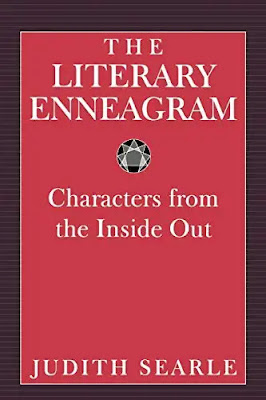Harnessing the Power of The Enneagram in Fiction Writing
by Olivia Salter
In the world of fiction writing, creating multidimensional characters is paramount. The Enneagram, a powerful personality typing system, offers writers a rich framework to develop compelling and authentic characters. This ancient system categorizes personalities into nine types, each with distinct motivations, fears, desires, and behavioral patterns. By understanding and utilizing the Enneagram, writers can breathe life into their characters, ensuring they resonate deeply with readers.
Understanding The Enneagram
The Enneagram delineates nine core personality types, each representing a different worldview and way of processing emotions. These types are:
- The Reformer (Type 1): Principled, purposeful, self-controlled, and perfectionistic.
- The Helper (Type 2): Generous, demonstrative, people-pleasing, and possessive.
- The Achiever (Type 3): Adaptive, excelling, driven, and image-conscious.
- The Individualist (Type 4): Expressive, dramatic, self-absorbed, and temperamental.
- The Investigator (Type 5): Perceptive, innovative, secretive, and isolated.
- The Loyalist (Type 6): Engaging, responsible, anxious, and suspicious.
- The Enthusiast (Type 7): Spontaneous, versatile, acquisitive, and scattered.
- The Challenger (Type 8): Self-confident, decisive, willful, and confrontational.
- The Peacemaker (Type 9): Receptive, reassuring, complacent, and resigned.
Crafting Characters with Depth
Using the Enneagram as a character development tool allows writers to delve into the psyche of their characters, understanding their inner workings and what drives them. Here's how to incorporate the Enneagram into fiction writing:
- Defining Core Motivations and Fears: Each Enneagram type has a unique set of core motivations and fears. For example, a Type 1 character is driven by a need for integrity and the fear of being corrupt or evil. Understanding these elements helps in creating consistent and believable behaviors.
- Building Relationships and Conflicts: Characters interact based on their personality types. A Type 2 (The Helper) might naturally clash with a Type 5 (The Investigator) due to their differing needs for emotional connection and personal space. These dynamics can fuel plot tension and character arcs.
- Creating Character Arcs: The Enneagram provides a pathway for character growth. For instance, a Type 3 (The Achiever) might start the story driven by success and recognition but evolve towards valuing authenticity and genuine connections.
Adding Complexity and Flaws: Realistic characters are complex and flawed. The Enneagram highlights both the strengths and weaknesses of each type. A Type 8 (The Challenger) might be assertive and protective but also struggle with controlling tendencies and vulnerability.
Types in Action
Let’s consider an example. Imagine a story featuring three main characters: a Type 1 (The Reformer), a Type 4 (The Individualist), and a Type 6 (The Loyalist).
- Type 1 (The Reformer): Jane is a principled lawyer fighting for justice. Her inner critic constantly drives her to perfection, causing friction in her personal life.
- Type 4 (The Individualist): Alex is a brooding artist, struggling with feelings of inadequacy and longing for a unique identity. His emotional intensity adds depth to his relationships.
- Type 6 (The Loyalist): Sam is a dedicated detective, often plagued by self-doubt and anxiety. His loyalty to his friends and duty drives his actions, but his suspicion can lead to conflicts.
Throughout the story, their interactions and growth reflect their Enneagram types, providing a rich tapestry of motivations and conflicts. Jane’s pursuit of justice, Alex’s quest for identity, and Sam’s struggle with trust and security weave together, creating a compelling narrative.
In conclusion, the Enneagram is more than just a personality typing system; it’s a valuable tool for fiction writers aiming to create authentic, multi-layered characters. By understanding and incorporating the Enneagram into character development, writers can craft stories that resonate deeply with readers, exploring the complexities of human behavior and relationships.




.jpg)